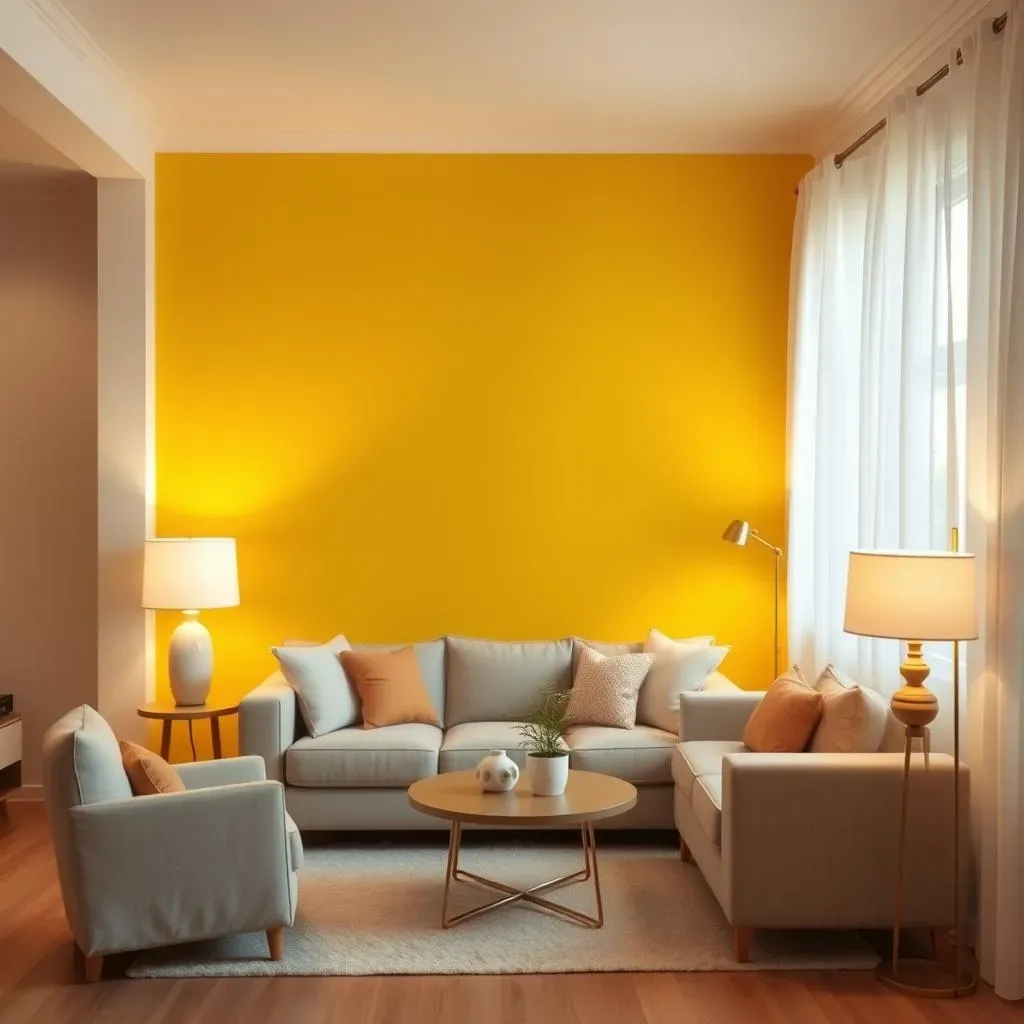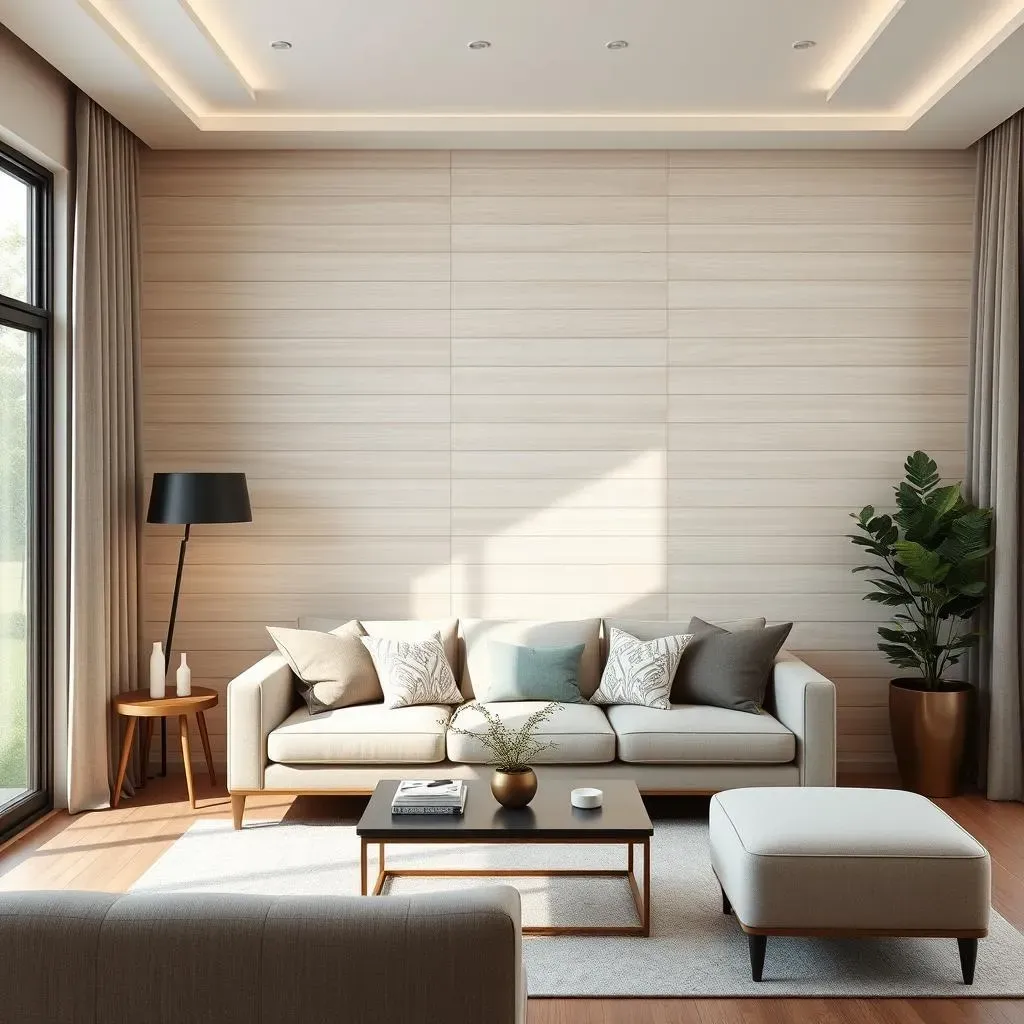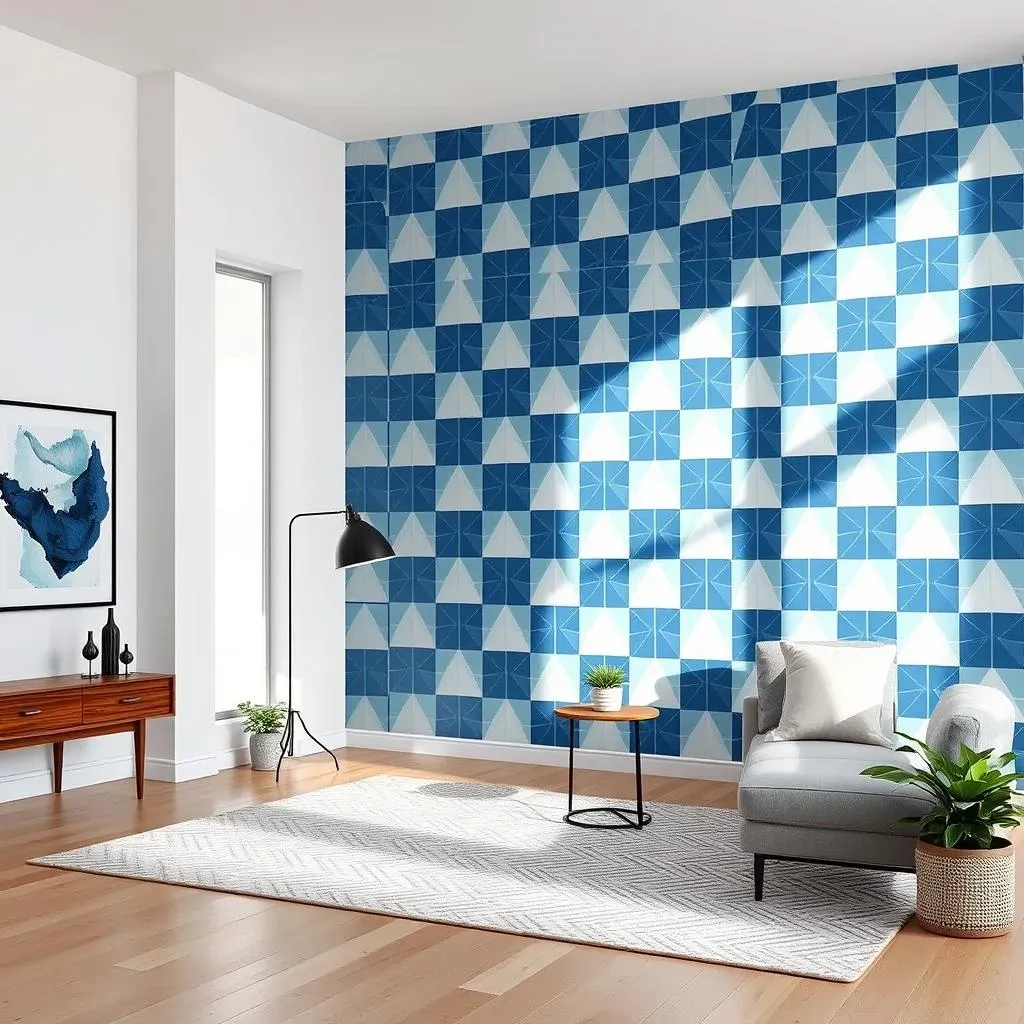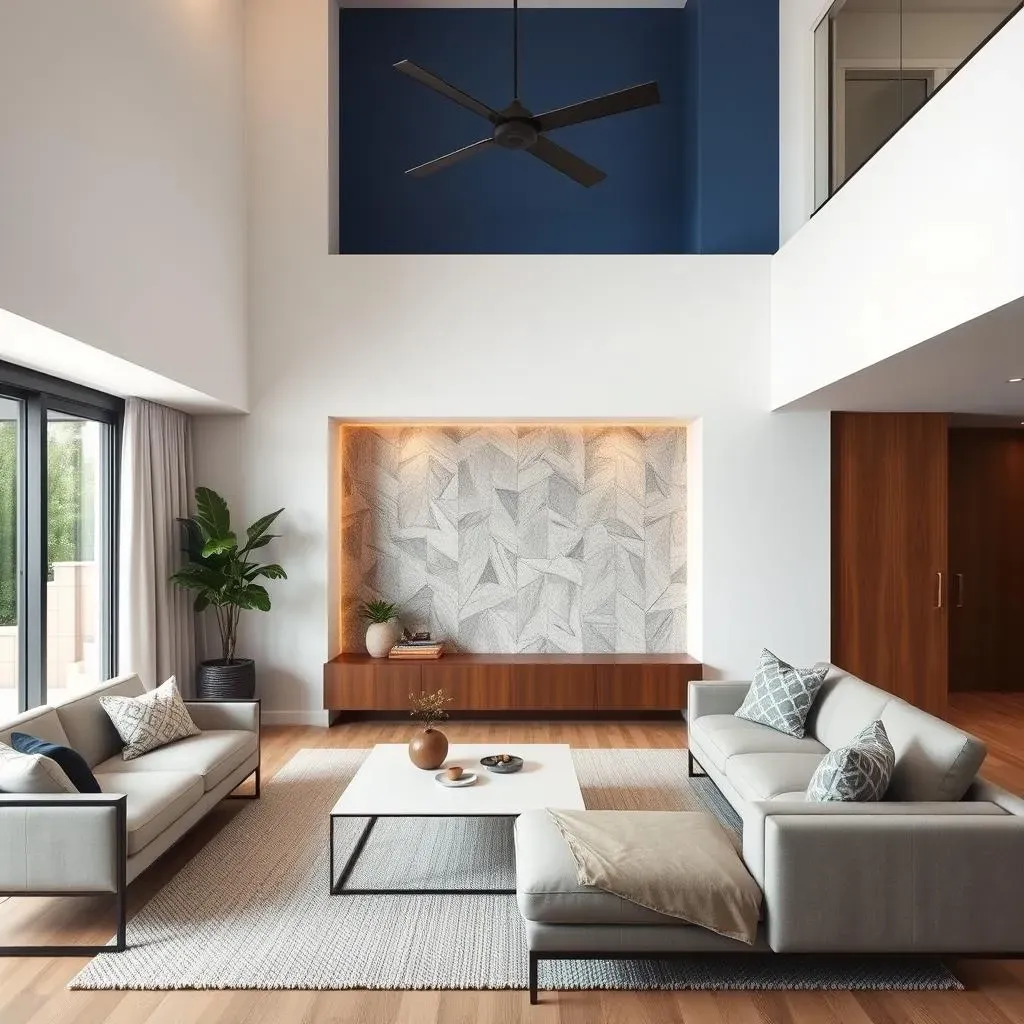Table of Contents
Feeling cramped in your small space? Think beyond just rearranging furniture! This article is your guide to unlocking the transformative power of accent walls. We'll explore the best modern accent wall ideas for small spaces, proving that even limited square footage can boast big style. Forget the outdated notion that small rooms need to be bland. We'll show you how strategic color choices, textures, and patterns can make a dramatic difference. Prepare to be inspired as we delve into practical tips and tricks to visually expand your room and create a space that feels both stylish and spacious. Get ready to discover how a well-placed accent wall can become the focal point of your home, elevating your décor and reflecting your unique personality. From clever use of light to the magic of texture, we'll equip you with the knowledge to design an accent wall that's not just visually appealing, but also maximizes the functionality of your small space. Let's transform those small rooms into stylish havens, one accent wall at a time!
Modern Accent Wall Ideas for Small Spaces: Color and Light

Modern Accent Wall Ideas for Small Spaces: Color and Light
Let's talk light and color – the dynamic duo of small-space design! Think of your small room as a canvas. A dark, heavy color can make it feel like a closet, but the right shade can open things up. Light colors, like soft whites, creams, or pastels, are your best friends here. They bounce light around, making the space feel larger and airier. But don't be afraid of color! A pop of a bright, bold hue on an accent wall can add personality and visual interest without overwhelming the room. The key is to balance it. A vibrant accent wall paired with lighter, neutral colors on the other walls creates a perfect harmony. Imagine a sunny yellow accent wall in a small bedroom, instantly brightening the space and adding a cheerful vibe. Or consider a calming, muted blue accent wall in a tiny living room, creating a tranquil oasis. Remember, the right color can dramatically alter the perception of space.
Color | Effect | Small Space Suitability |
|---|---|---|
Light Neutrals (White, Cream, Beige) | Brightens, Enlarges | Excellent |
Pastel Shades (Light Blue, Lavender, Mint) | Calming, Airy | Good |
Bold Accents (Yellow, Teal, Coral) | Adds Personality, Focus | Use Sparingly |
Dark Colors (Navy, Charcoal, Deep Green) | Can Make Space Feel Smaller | Use Cautiously (as an accent) |
Now, let's talk about the magic of light. Natural light is your best friend in a small space. Maximize it! Keep windows unobstructed and use sheer curtains to let light flow freely. Artificial lighting is equally important. Avoid harsh overhead lighting; instead, opt for softer, layered lighting. Think table lamps, floor lamps, and even strategically placed wall sconces. These create a warm, inviting ambiance and subtly highlight the accent wall, drawing the eye and adding depth. Remember, lighting can completely transform the mood of a room, and in a small space, it’s crucial to get it right. A well-lit room always feels bigger and more welcoming.
- Maximize natural light
- Use layered artificial lighting
- Avoid harsh overhead lighting
- Consider using mirrors to reflect light
- Choose light bulbs with a warm color temperature
Modern Accent Wall Ideas for Small Spaces: Texture and Pattern

Modern Accent Wall Ideas for Small Spaces: Texture and Pattern
Adding Depth with Texture
Okay, so we've nailed color and light. Now let's talk texture – it's a game-changer in small spaces! Think beyond just paint. Adding texture creates visual interest and prevents the room from feeling flat. A textured accent wall can add a sense of depth and warmth, making the space feel more inviting. Consider using materials like shiplap, reclaimed wood, or even wallpaper with a raised pattern. Shiplap, for instance, brings a rustic charm, while a subtly textured wallpaper can add a touch of elegance. The key is to choose a texture that complements your overall style and doesn't overwhelm the small space. Too much texture can make a small room feel cluttered, so keep it balanced. A textured accent wall paired with smooth, untextured surfaces elsewhere in the room will create a visually appealing contrast.
Texture | Effect | Small Space Suitability |
|---|---|---|
Shiplap | Rustic, Adds Dimension | Good |
Textured Wallpaper | Elegant, Subtle Depth | Excellent |
Brick (exposed or faux) | Industrial, Warmth | Use Sparingly |
Stone (faux or real) | Natural, Luxurious | Use Cautiously (as an accent) |
Playing with Patterns
Patterns are another powerful tool in your small-space design arsenal. They can add personality and visual interest, but choosing the right pattern is key. Small, delicate patterns work best in small rooms; large, bold patterns can make a space feel cramped. Think about geometric patterns, floral prints, or even abstract designs. A geometric pattern can add a modern touch, while a subtle floral print can create a more calming atmosphere. The key is to select a pattern that complements the room's overall style and doesn't clash with your existing furniture or décor. You can also use patterns in unexpected ways – a patterned rug, throw pillows, or even artwork can subtly incorporate the pattern without overwhelming the space. Remember, balance is key. A patterned accent wall paired with plain surfaces elsewhere in the room will prevent visual overload.
- Small, delicate patterns are best for small rooms
- Consider geometric, floral, or abstract designs
- Use patterns sparingly to avoid visual clutter
- Complement the pattern with solid colors on other walls
- Incorporate patterns through other elements like rugs or art
Combining Texture and Pattern
The real magic happens when you combine texture and pattern! Imagine a textured wallpaper with a subtle geometric pattern, adding both depth and visual interest without overwhelming the space. Or consider shiplap painted in a soft pastel shade with a delicate floral pattern stenciled on top. This creates a unique and stylish accent wall that adds character without making the room feel smaller. The possibilities are endless! Just remember to keep the overall look balanced and cohesive. Too much going on can be visually overwhelming, even in a larger space, and especially in a small one. The goal is to create a space that feels both stylish and comfortable, and a well-designed accent wall can help you achieve that.
Small Space Transformations: Modern Accent Wall Design Tips

Small Space Transformations: Modern Accent Wall Design Tips
Planning Your Accent Wall: Measuring and Assessing
Before you even think about paint swatches or wallpaper samples, grab your measuring tape! Accurately measuring your wall is crucial. Consider the existing furniture placement. Does the accent wall need to work around a window, a door, or a built-in shelf? Take note of any electrical outlets or light switches that need to be incorporated into your design. Think about the overall style of your room. Does it lean towards minimalist, bohemian, or something else? Your accent wall should complement the existing décor, not clash with it. Consider the height of your ceiling; a vertical stripe pattern can make low ceilings look taller, while horizontal stripes can widen a narrow space. Proper planning is key to a successful accent wall transformation.
Step | Action |
|---|---|
1 | Measure the wall's dimensions accurately. |
2 | Note the location of windows, doors, and fixtures. |
3 | Assess the room's existing style and décor. |
4 | Consider ceiling height and wall proportions. |
5 | Sketch your design ideas before committing to materials. |
Choosing the Right Materials: Budget and Style
Now for the fun part – selecting your materials! Your budget will play a big role here. Paint is the most budget-friendly option, offering endless color possibilities. Wallpaper, while more expensive, can add texture and pattern, creating a more dramatic effect. Reclaimed wood offers a rustic charm, but can be costly. Peel-and-stick options offer a happy medium; they're easier to install than traditional wallpaper or wood paneling, and are often more affordable. Consider the style of your room when choosing materials. A modern minimalist space might benefit from a clean, smooth finish, while a bohemian style might thrive with a textured wallpaper. Remember that your accent wall is a statement piece; choose materials that reflect your personal style and enhance the overall look of your room.
- Paint: Budget-friendly, versatile.
- Wallpaper: Adds texture and pattern, more expensive.
- Reclaimed Wood: Rustic charm, can be costly.
- Peel-and-stick options: Easy installation, affordable.
- Tile: Durable, adds a unique visual element.
Finishing Touches: Enhancing the Impact
Once your accent wall is complete, consider adding some finishing touches to maximize its impact. Strategic lighting can highlight the texture and color of your chosen materials, creating a warm and inviting ambiance. Artwork or mirrors can add personality and visually expand the space. A strategically placed mirror can reflect light, making the room appear larger. Consider the scale and style of any artwork you add; it should complement your accent wall, not compete with it. Don't overcrowd the space. A few carefully chosen accessories can enhance the overall look, while too many items can make the small room feel cluttered. Remember, less is often more when it comes to small-space design. A well-executed accent wall, complemented by a few thoughtful accessories, can transform a small room into a stylish and functional space.
